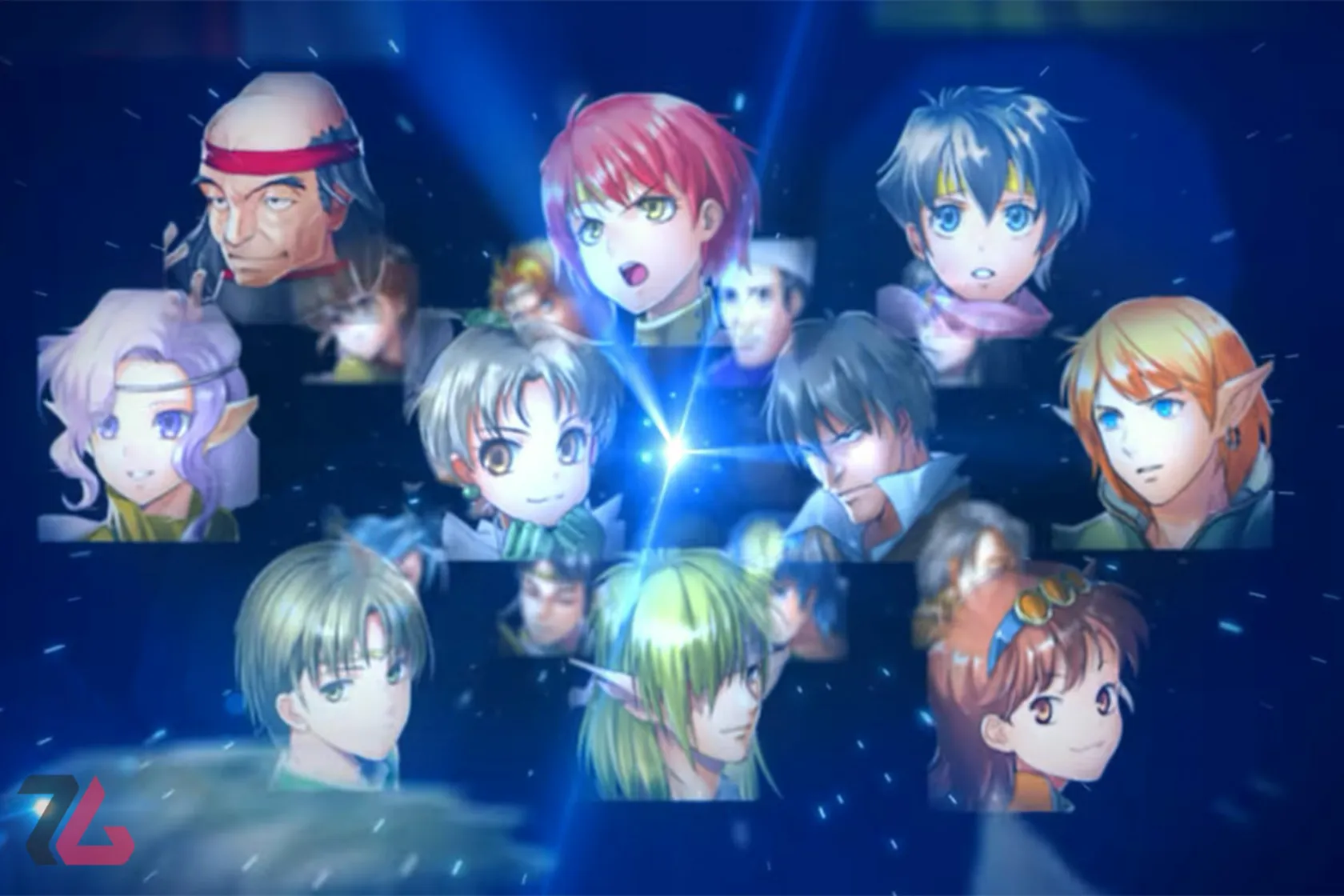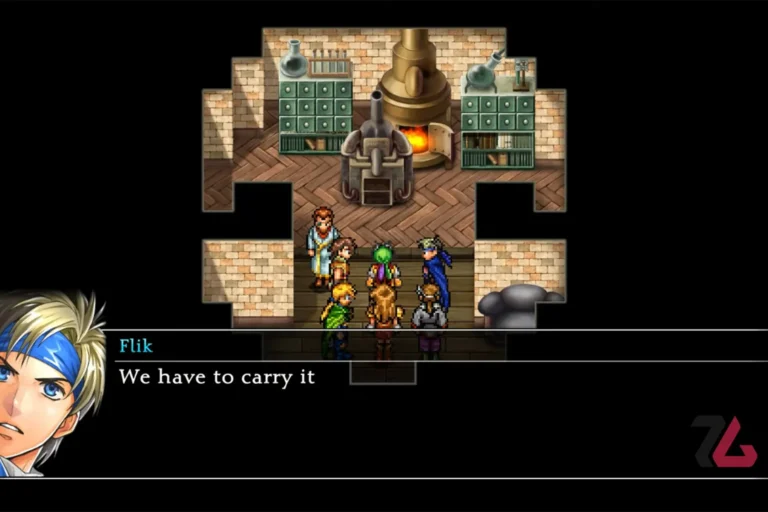Let’s imagine—because gaming is a journey through imagination. You’re standing in a stone castle, the distant roar of a river in your ears, and in your hand, a list of 108 names: some allies, some enemies, and some indifferent strangers whose fates are now tied to yours. That is the essence of the Suikoden series: a world where every choice, every character, and every battle carries weight, placing you not only as a hero, but as a leader at the heart of an epic saga.
The HD Remaster of Suikoden I & II is a welcome opportunity to revisit a franchise long forgotten—one that always deserved a fresh look.
A Golden Era Rekindled in High Definition
In recent years, the gaming industry has seen a wave of remasters and remakes, breathing new life into once-lost gems. The JRPG genre has been no exception: from the gorgeous HD-2D remake of Dragon Quest III to the ambitious Final Fantasy VII Remake, developers have found creative ways to blend nostalgia with modern expectations.
Now, Suikoden I&II HD Remaster steps into the spotlight, emerging like a star from the ‘90s PlayStation era. But can Konami strike the right balance between honoring nostalgia and embracing modernization? Is this merely a tribute to the past or a step toward the franchise’s revival?
Looking Back: The Legacy of Suikoden
Before diving into the technical and narrative aspects of the remaster, it’s worth pausing to appreciate the historical weight of Suikoden. Originally released in 1995, the series was inspired by the Chinese classic novel Water Margin, combining political intrigue, fantasy, and a unique system of 108 Stars of Destiny. Unlike giants like Final Fantasy or Dragon Quest, which often followed linear, hero-centric narratives, Suikoden introduced military strategy, character recruitment, and moral complexity as key gameplay features.
Suikoden II (1998) perfected this formula. With its layered story, deeper character arcs, and unforgettable moments—especially the chilling presence of villain Luca Blight—it is still revered as one of the greatest JRPGs ever made.
Timeless Stories of War, Betrayal, and Leadership

Suikoden I introduces players to the Scarlet Moon Empire, where a young hero, the son of a prominent general, becomes disillusioned with the empire’s corruption and rises to lead a resistance army. Betrayal, loyalty, and the weight of leadership are central to the tale.
Suikoden II continues the saga three years later, following two childhood friends caught in a brutal war between the Highland Kingdom and the Jowston Alliance. The emotional highs are powerful—thanks to its well-written plot twists and memorable confrontations, especially with the unhinged and ruthless Luca Blight.
Even decades later, both games’ exploration of themes like sacrifice, loyalty, and justice remains impactful.
Faithful Restoration or Missed Opportunity?
Konami wisely chose not to alter the core storytelling. Dialogues retain their classic charm, and the English localization—an improvement over the previous PSP releases—brings the narrative to life with better clarity and flow. However, one major omission is the lack of voice acting.
Optional voiceovers could have amplified dramatic moments—especially in Suikoden II, where scenes like Luca Blight’s rants could’ve been even more intense. While budget constraints may have played a role, it’s a missed opportunity to bridge the experience for newer players.
Gameplay: Classic at Heart, Modern in Touch
At its core, gameplay remains true to its original design: turn-based combat with up to six party members, the Rune system to manage magic and special abilities, and large-scale strategic battles that define major story arcs—especially in Suikoden II, which offers more complex scenarios.
The remaster brings subtle but welcome quality-of-life updates: auto-save, battle speed-up, and reduced randomness in certain mechanics (such as success rates for escaping battles). These tweaks offer a smoother experience for modern players.
However, not all changes come without drawbacks. The simplified combat pacing sometimes undermines the tactical depth—especially with the Rune system, which in the original required strategic planning. In Suikoden II, this shift is more noticeable due to the game’s expanded combat complexity.
Removing some randomness also makes battles feel more linear, reducing that classic trial-and-error satisfaction that older JRPG fans cherish.
A Conservative Approach Compared to Its Rivals
It’s hard not to compare Konami’s approach to other recent remasters. Square Enix fully rearranged the music in Final Fantasy Pixel Remaster and even rebuilt Trials of Mana into a full 3D experience. In contrast, Konami plays it safe.
This commitment to authenticity is admirable—it preserves the spirit of Suikoden—but also hints at a lack of ambition. Where others reimagine classics to attract new audiences, Konami seems content appealing mostly to longtime fans. Personally, I hoped for a bolder remaster, but perhaps my expectations lean more toward a remake than a remaster.
The Magic of the 108 Stars Remains Intact
Despite its conservative choices, the Stars of Destiny mechanic still shines. Recruiting all 108 characters remains an addicting, fulfilling challenge. Thanks to an improved UI and subtle in-game hints, players can now complete this grand puzzle more easily—making the journey feel both structured and rewarding.
Final Thoughts: A Gentle Spark, Not a Roaring Flame
Suikoden I&II HD Remaster is not a revolutionary remake. It doesn’t try to be. Instead, it serves as a respectful restoration—a tribute to a beloved JRPG series whose values of leadership, loyalty, and human connection never go out of style.
For longtime fans, it’s a nostalgic return to a world of emotional storytelling and meaningful decisions. For newcomers, it’s a gentle introduction to what made Suikoden special—though perhaps not quite enough to convert them without modern polish.
Still, in an industry that often forgets its roots, Suikoden shines as a quiet reminder: some stars never fade—they just need a little light to shine again.
